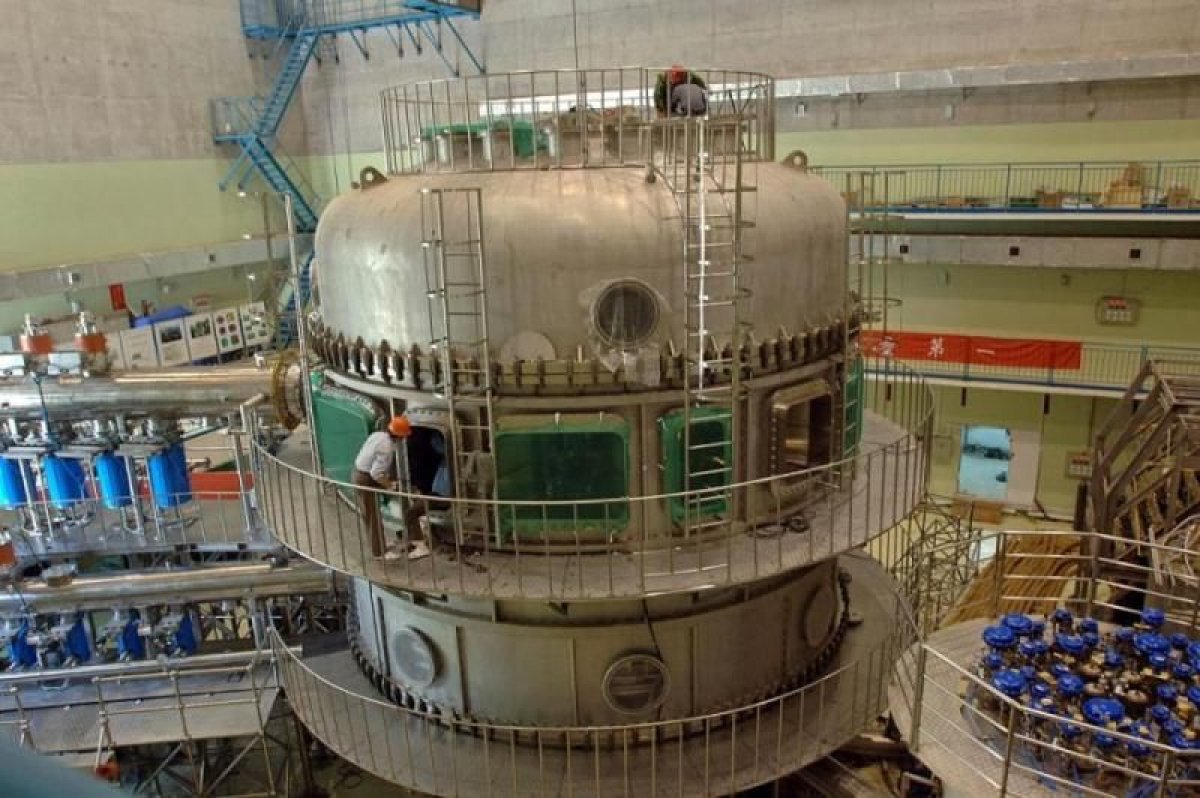China has taken a big step forward in the quest for nuclear fusion—an almost unlimited source of clean, cheap energy that would harness power in the same way the Sun does. Scientists with the Chinese Academy of Sciences have announced their 'artificial sun'—a fusion reactor experiment—has achieved a temperature of 100 million degrees Celsius. That's six times as hot as the center of the actual Sun.
Scientists across the world are working to achieve nuclear fusion. Unlike nuclear fission, which splits atoms to create energy, fusion involves joining lighter atomic nuclei to form a heavier nucleus. This reaction produces plasma, which is a state of matter.
The major problem with nuclear fusion is the conditions required to create it—extremely high pressures and temperatures of around 150 million degrees Celsius (270 million degrees Fahrenheit). To put that into perspective, the center of the sun is around 15 million degrees Celsius.
To harness the energy, the plasma must be suspended inside a reactor. But like on the Sun, the plasma is prone to produce bursts. If this happens and the plasma touches the reactor wall, it can easily damage it.

Scientists at the Hefei Institute of Physical Science, which is part of the Chinese Academy of Sciences, have been working on an experiment to achieve nuclear fusion since 2006. The program—Experimental Advanced Superconducting Tokamak (EAST)—is known as the 'artificial sun' because of the nature of what the scientists are trying to achieve.
In recent years, scientists working on the project have announced a number of breakthroughs. Last year, they said they had managed to suspend plasma in a stable state for over 100 seconds—a world record for this achievement.
Now, the team has said it has managed to generate plasma with a temperature of 100 million degrees Celsius. They said this is one of the fundamental elements of fusion, so reaching this milestone is a major success in working towards this source of power.
While generating plasma at such high temperatures, there are still many milestones that will need to be overcome before fusion becomes a reliable source of energy. These challenges include building a reactor that can confine and suspend the plasma, and then scaling this expensive equipment up to the point where it would become commercially viable.
Uncommon Knowledge
Newsweek is committed to challenging conventional wisdom and finding connections in the search for common ground.
Newsweek is committed to challenging conventional wisdom and finding connections in the search for common ground.
About the writer
Hannah Osborne is Nesweek's Science Editor, based in London, UK. Hannah joined Newsweek in 2017 from IBTimes UK. She is ... Read more
To read how Newsweek uses AI as a newsroom tool, Click here.








